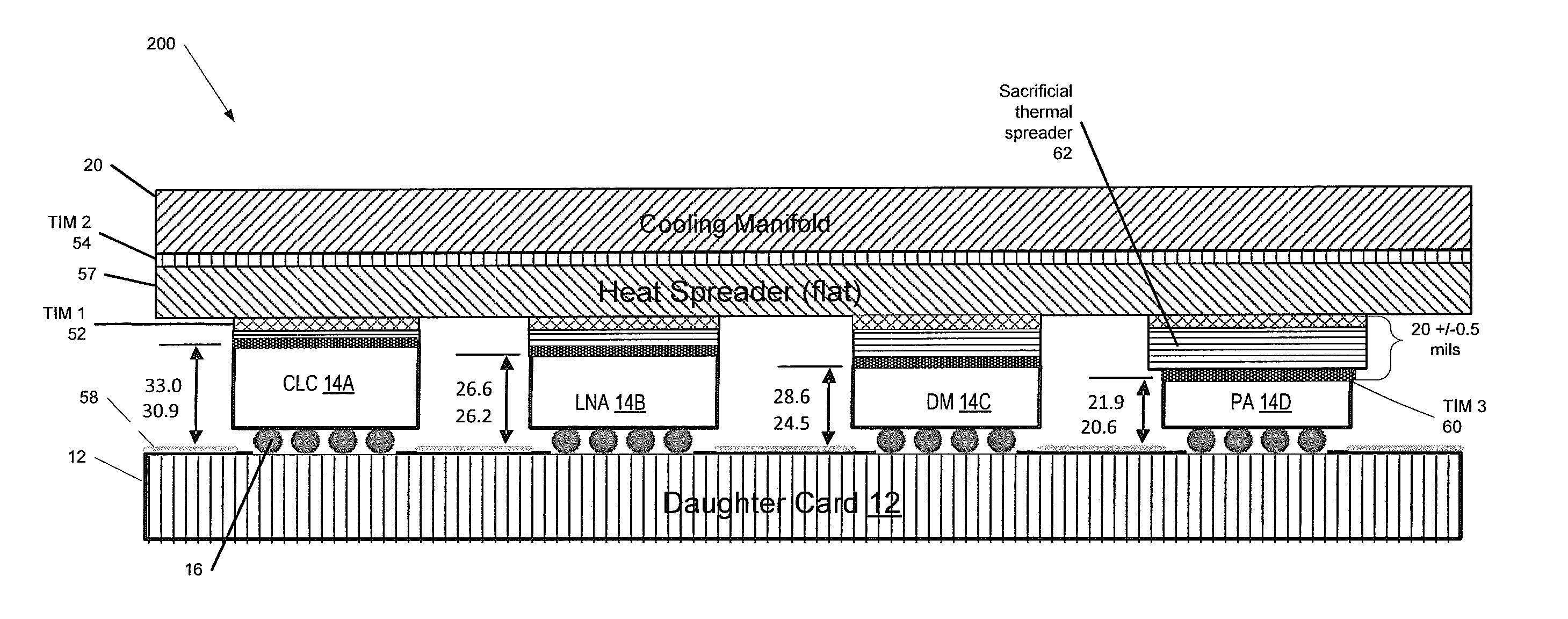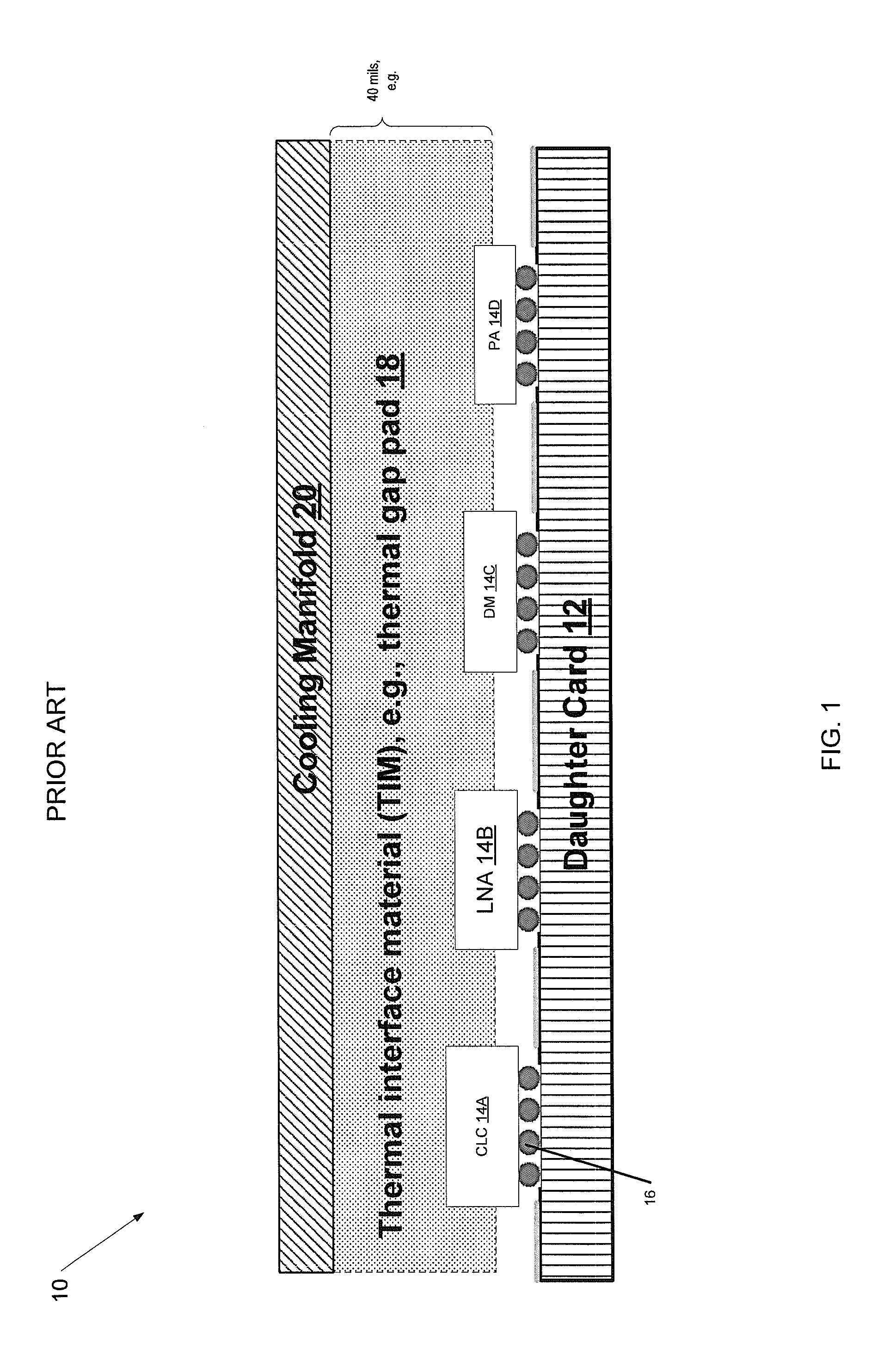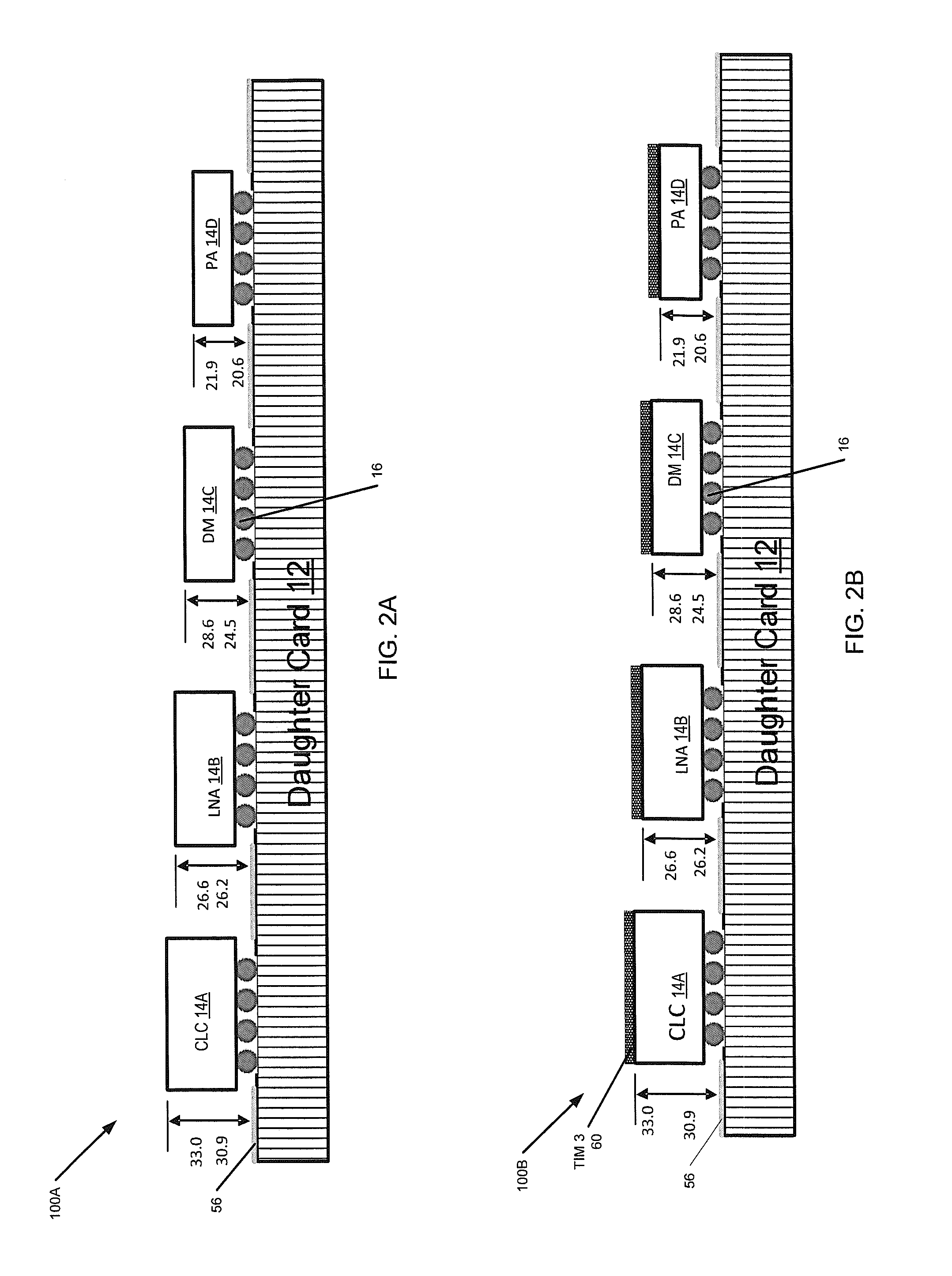Conduction cooling of multi-channel flip chip based panel array circuits
a panel array circuit and flip chip technology, applied in the direction of electrical apparatus construction details, instruments, casings/cabinets/drawers, etc., can solve the problems of high power circuits, densely packed circuits, and insufficient air cooling for devices such as phased array antennas, so as to improve thermal performance, enhance thermal conductivity, and minimize thermal gaps
- Summary
- Abstract
- Description
- Claims
- Application Information
AI Technical Summary
Benefits of technology
Problems solved by technology
Method used
Image
Examples
Embodiment Construction
[0043]In addition to the various embodiment or embodiments disclosed below, this invention is capable of other embodiments and of being practiced or being carried out in various ways. For example, the invention is applicable to virtually any electrical device that has components that generate heat, have multiple planar surfaces that conduct this heat to one substantially planar heat sink and therefore is and is not limited to flip chip, MMICs, or active electronically scanned array (AESA) (also known as phased array) assemblies. At least some of the embodiments of the invention described herein have applicability to devices such as mobile computing devices, having one or more CPU chips, where use of liquid and / or fan cooling is impractical or impossible. Various embodiments of the invention include (but are not limited too), integrated microelectronics modules that feature multiple flip chips that engage one substantially planar heat sink, and the like.
[0044]Advantageously, the embo...
PUM
| Property | Measurement | Unit |
|---|---|---|
| total height | aaaaa | aaaaa |
| power | aaaaa | aaaaa |
| temperature | aaaaa | aaaaa |
Abstract
Description
Claims
Application Information
 Login to View More
Login to View More - R&D
- Intellectual Property
- Life Sciences
- Materials
- Tech Scout
- Unparalleled Data Quality
- Higher Quality Content
- 60% Fewer Hallucinations
Browse by: Latest US Patents, China's latest patents, Technical Efficacy Thesaurus, Application Domain, Technology Topic, Popular Technical Reports.
© 2025 PatSnap. All rights reserved.Legal|Privacy policy|Modern Slavery Act Transparency Statement|Sitemap|About US| Contact US: help@patsnap.com



